If Climate Change rings to many of us as an almost insurmountable global challenge, then net-zero has recently emerged as its apparent universal solution. The coin has finally been imprinted with two clearly defined sides, in constant and inseparable opposition. Many would argue that we can sleep well again; the apocalypse has been postponed indefinitely. The children of the children of our children will be able to enjoy a liveable planet, after all.
Moreover, while Climate Change seems highly complex and difficult to summarize in one tweet – not to forget those very long UN IPCC reports that most do not read, net-zero appears as a straightforward idea. Having zero in the headline brings instant relief as we automatically assume that Carbon (CO2) or other Greenhouse Gas (GHG) emissions will finally be tamed, somehow. We do not need to worry too much about the Net side of the equation. The KISS principle works pretty well here.
However, net-zero is not a new concept. It was first used in physics 65 years ago, long before the climate became a global concern. It first appeared in the Climate Change literature in 1991 as “zero net” and then as net-zero 10 years later. But it took off in 2009 and was then formalized by a group of 30 women in Scotland who were trying to confront the climate crisis by proposing simple ideas policymakers and the general public could readily embrace. The 2015 CoP Paris meeting made reference to net-zero emissions, albeit it is missing in the official Paris Climate Agreement document. The UN IPCC first used the idea in 2018, while the 2021 Glasgow CoP fully embraced it. And just last month, the International Standards Organization (ISO) launched an initiative to create guiding principles for net-zero. So we are on a roll, some would say.
So what is net-zero, really? The zero part of the equation needs no explanation. Net is the operative word here. It suggests taking stock within a given period to assess what is left after a series of actions or transactions have occurred. An easy example here is income. My annual net income is the difference between what I am paid and what is left after taxes and other deductions and fees. In principle, such a balance should yield a positive amount. However, net-zero will pop up if my income becomes zero after I factor in all deductions. This is because income inflows are fully matched by outflows and reach perfect equilibrium at zero – while I might not be able to survive such a mathematical nirvana for long. Not an enviable position to be in, indeed. Sure, thanks to the apparent success of “financial inclusion,” I might be able to get micro-credit or secure some micro-loans. In any case, net-zero income is a major headache, not a solution.
In the Climate Change scenario, net-zero has nothing to do with eliminating GHG emissions altogether. That zero is not the target here, by design. Moreover, net-zero does not aim to reduce the GHGs we have already masterfully deployed in the atmosphere. Instead, it suggests that we can continue to emit GHGs as long as we can remove the equivalent amount within a given time frame. Equilibrium must rule at all costs if we are to avoid even higher global temperatures in the future.
Nevertheless, the KISS approach starts to crumble once we begin to poke into the idea of emissions removal. First of all, which emissions? We have CO2, methane (CH4), nitrous oxide (N2O) and a whole set of awful stuff humans have created in the last 100 years, among others. Second, what about fossil fuels? Shall we go for coal, oil or gas? What about those nefarious cement CO2 emissions? What are those much-pumped low-carbon fossil fuels, really? Third, what proven technologies exist at the moment that can effectively remove GHG at the production level? Are these technologies safe? Will such technologies introduce a new set of environmental challenges in the medium and long term? A huge debate is already raging in policy and academic circles here. And let us not forget the effectiveness of reforestation and afforestation in carbon capture. Forth, what sectors should be prioritized? Agriculture, land use change and forests (LUCF), industrial production, energy, and transportation could be good candidates. Last but not least, who is making such decisions? What governance mechanisms are available to provide inputs and steer the wheel in a particular direction? Needless to say, answers to these questions are all but simple. Regardless, net-zero is just the front to a series of complex challenges we are still trying to sort out.
I certainly do not have the answer to such vexing questions. My focus here will thus be on the governance component that, in practice, will impact how the other interrelated questions could be addressed on the ground. Let us not forget that Climate Change is a planetary phenomenon; it has no nationality. So if country X is a significant GHG emitter, all other countries will be affected, like it or not. No exit door is available, not even for countries with negligible overall emissions. As a global public good, the environment demands concerted international action to domesticate the rapid climate changes.
Global governance mechanisms are thus required. And indeed, some are already in place (check that lovely and unforgettable acronym). The most well-known mechanism is the Conference of the Parties (CoP). CoP meetings are critical as it is there where answers to some of the above questions can be found. Landmarks such as the 1997 Kyoto Protocol and the 2015 Paris Climate agreement are shining examples. Usually, CoP host countries exercise plenty of influence in shaping meeting outcomes; they also hold the pen. So global expectations run high when G-7 or other powerful nations host CoP meetings. But, at any rate, while all sectors of global society are welcome to participate, it is national governments who, in the end, finalize meeting documents and stamp them with their national seal. So examining CoP final documents provides some of the answers we are looking for.
Undoubtedly, Glasgow was not as climatic as Kyoto or Paris despite the noisy 2050 net-zero agreement. Regardless, as expected, mitigation, adaptation and finance were goals. Historically, mitigation and finance have attracted the most attention, with adaptation usually sitting in the bleachers. The Glasgow document highlighted this shortfall but, in essence, postponed adaption details to CoP27 to take place in Egypt in early November, just before the World Cup. So the real non-financial action happened within the mitigation universe.
Glasgow endorsed four ambitious mitigation targets I will discuss following the order of my questions above. First, in terms of emissions, methane was identified as the priority, a perhaps surprising choice for many of us. One argument for tackling this particular GHG is that its Global Warming Potential (GWP) over 100 years is about 25 times higher than CO2. However, methane’s lifetime in the atmosphere is around 12 years, whereas CO2 could last centuries. On that basis, some have already made the case that methane should not be a top priority. Second, while fossil fuels were directly mentioned in the final document (unlike Paris, for example), CoP26 called for eliminating coal in the power sector as many energy plants still run on coal. Coal is undoubtedly the less efficient and worse CO2 emitter of all fossil fuels, but several developing countries partly depend on coal exports to sustain their economies. Transition plans would thus be needed. Third, the document did not mention any of the new emission removal technologies that are available at the moment. Instead, it proposed stopping and reducing deforestation and land degradation. However, reforestation and afforestation alone will not suffice to achieve net-zero emissions by 2050. Finally, the transportation sector (in addition to the energy sector addressed in the coal target) got the calling card. Glasgow was entirely behind the transition to electric vehicles (EVs). While EVs still face many challenges, let us not forget their possible environmental impact while securing the scarce raw materials required to develop efficient batteries at scale. In any case, the links to the energy sector are evident.
Now, in the age where “data is the new oil” (but with supposedly much lower GWP!), one has to wonder if this set of targets matches existing priorities, especially for developing and emerging countries. Evidence-based policymaking is the clarion call here. But before we sail into the data sea, a few caveats.
For starters, we must acknowledge that there is no level playing field regarding GHG emissions. On average, the wealthiest and most populous nations sit at the top while poorer countries patiently wait at the bottom, contributing little to the problem. So while the agreed targets are intended to be global, the existing and ample country diversity might show divergence. Moreover, let us not forget that poorer countries have access to less financial, technological and human resources to successfully implement most of the Glasgow targets, pace net-zero, Paris and Kyoto. Also, the host country usually appoints a CoP President, who in turn appoints Ministers from other nations to lead information and political consultations on the various CoP themes. For each of them, two Ministers are chosen, one from a developed country and one from a developing one. So on paper, these mitigation targets have the blessing of all nations.
Figure 1 shows global GHG by components, excluding land use change and forest (LUCF) and the awful stuff mentioned at the beginning. Not including the former is problematic, especially for countries and regions where such emissions (that comprise CO2, CH4 and N2O) are relatively large. On the other hand, note that methane and nitrous oxide data include some LUCF emissions. No one said this was going to be easy!
At any rate, we can clearly see that in 2018 CO2 was by far the largest source of emissions. Moreover, we can intuitively see that CO2 emissions have grown much faster than the other two GHG since the 1990s (GHG data for previous years does not seem to exist, unfortunately). Therefore, if it was up to me, I would direct all my energies to tackle the Co2 threat, more so if we factor in its GWP. Figure 2 shows the same deal but adds regions.
Here we immediately see that Sub-Saharan Africa (SSA), LAC and South Asia appear to have the most significant shares of methane emissions. And SSA is the only region where methane is the emissions leader. However, these numbers are somewhat misleading for two reasons. First, the global share of CH4 emissions for those three regions is 12 percent each, with East Asia & Pacific (EAP) and Europe & Central Asia leading the pack with 27 and 21 percent, respectively. Second, the absence of LUCF emissions introduces bias in two ways. First, the above calculations are slightly misestimated for countries and regions with low or negative LUCF emissions. That is the case for many developed countries. For countries with relatively high LUCF emissions, the figures are overestimated as a critical component of GHG emissions is missing. In the SSA, for example, LUCF emissions hover around 50% of the total, thus displacing methane from the top slot. But on the other hand, that should not change the ranking among the three GHG depicted in the figure. Is Glasgow targeting these regions?
Figure 3 shifts the focus from region to income levels defined by the World Bank.
The sudden ups and downs in the curves of some of the quadrants reflect the fact that both India and China started as low-income countries (LIC) in 1990 but are now part of the low-middle income (LMIC) and upper-middle-income (UMIC) cohorts, respectively. While here we also have the same LUCF bias, we find at the same time similar patterns, such as methane being the top GHG in low-income countries (LIC). Nevertheless, LIC methane emissions only account for 9 percent of the world’s total. Note also that CO2 and methane emissions in such a group of countries have declined substantially since 1998 (again, discounting LUCF) after India moved into the LMIC floor the previous year. Regardless, there is an inverse correlation between income levels and methane emissions. The higher the former, the lower the latter. Still, in 2018, six countries (China, Russia, India, USA, Brazil and Indonesia) accounted for almost 50 percent of all methane emissions. No LICs on this list, with India and Indonesia being the only LMICs.
The evidence for making methane emissions a top priority is weak at best. If a few countries are the main methane emitters, then why not specify targets for them? Putting methane as pie in the sky might distract us from the fundamental actions we need to take to ensure Climate Change slows down, with or without net-zero.
Cheers, Raúl
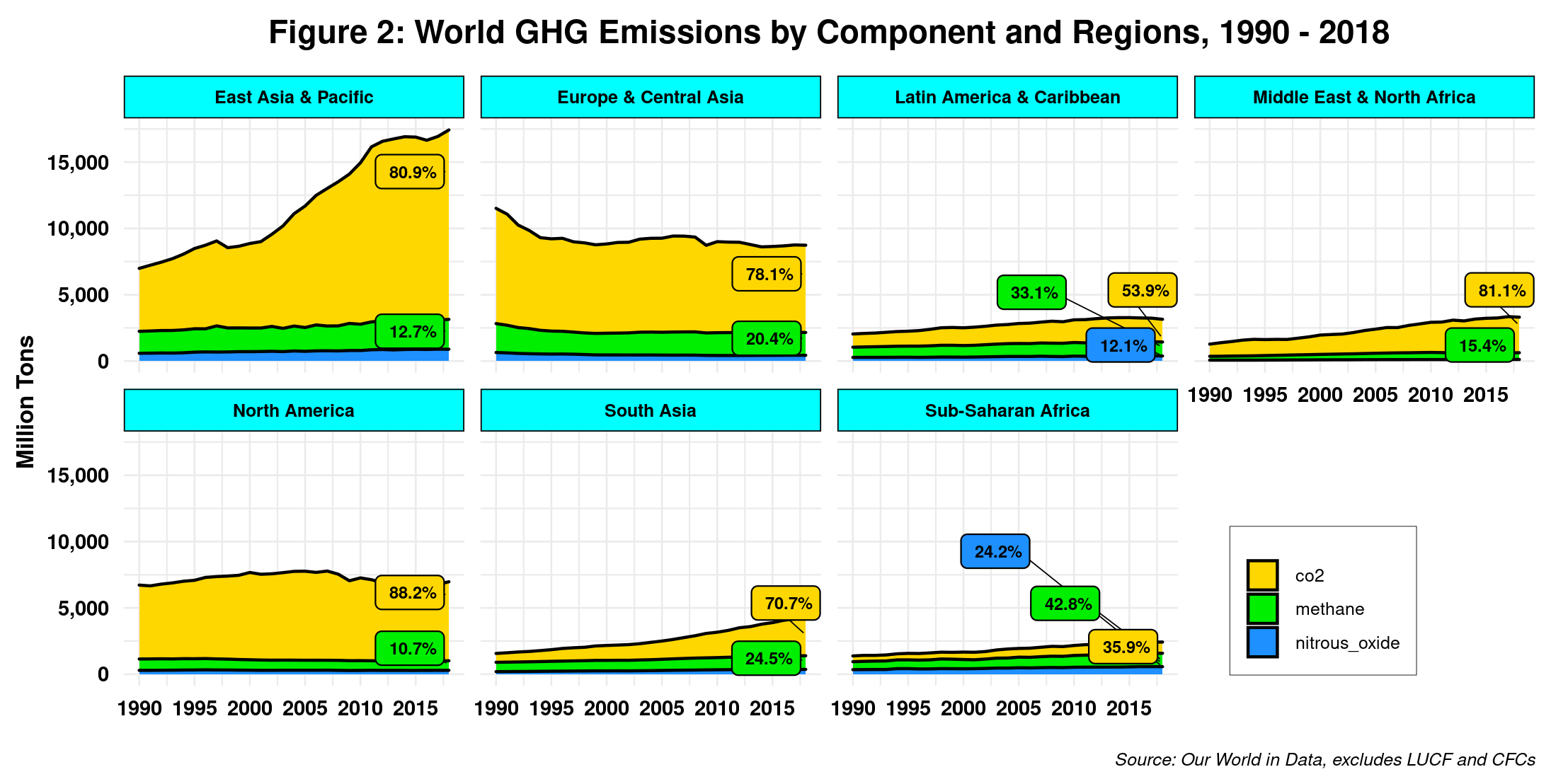
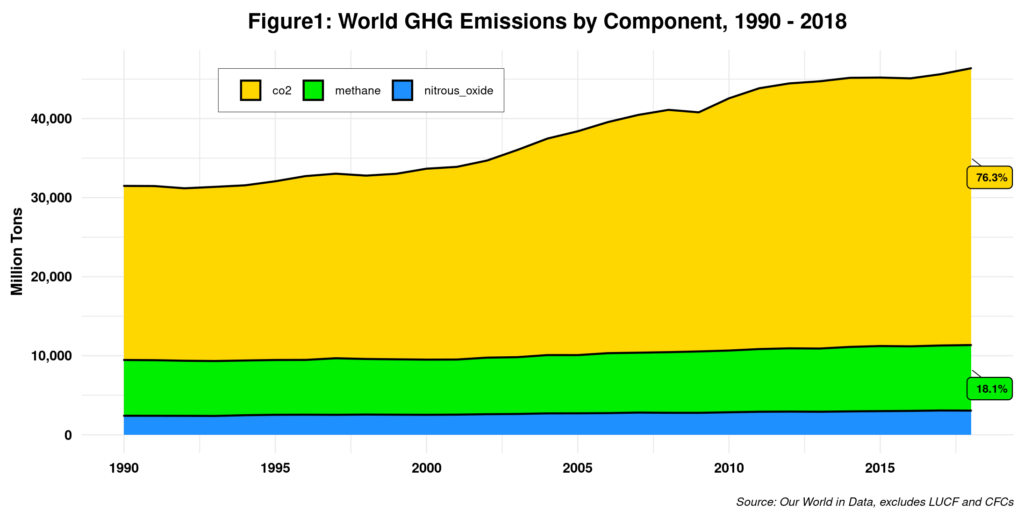
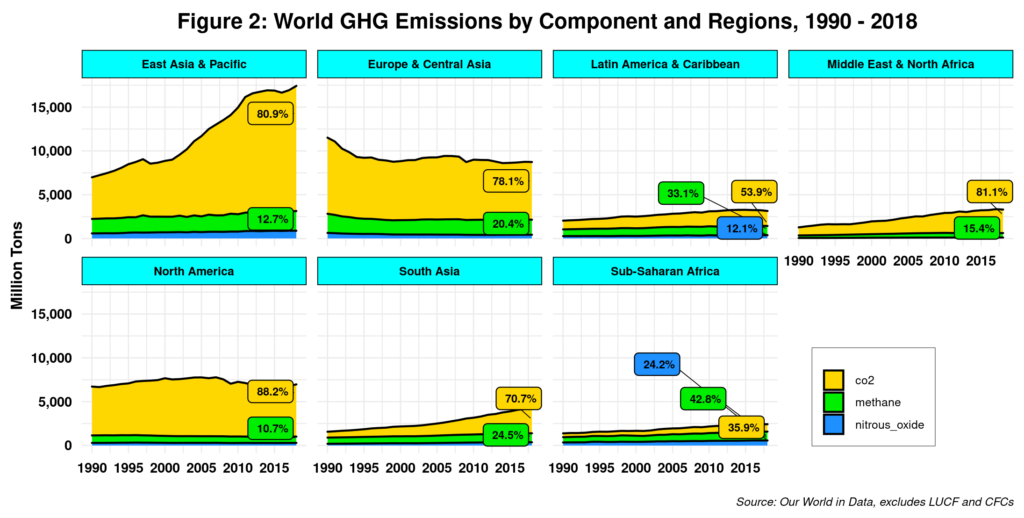


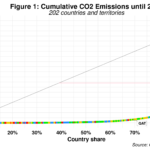
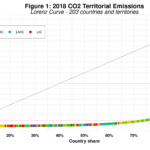
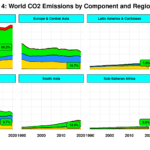


Comments
One response to “Net-zero Emissions and Developing Countries – I”